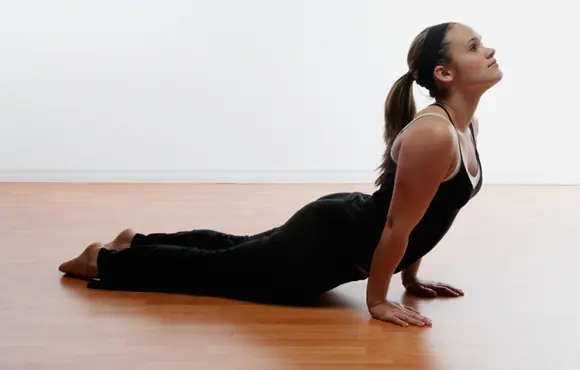It Can Help You Prevent Future Injuries
Use it in conjunction with your training and events. It's like getting your car serviced and is just as beneficial as massage. Plus, your teacher will give you methods for home practice that you can also use to stretch and activate your muscles before your workout or training session.
More: How Yoga Detoxes and Restores the Body
It Gives You a Good Foundation
Become practiced in Iyengar and you can take all that precision and apply it to other classes where you flow into poses quicker ...or where you may not get as many adjustments and hands on attention.
You won't be as prone to pain or injury from doing poses wrong and you'll be more apt to get the full range of benefits from every yoga class you attend.
More: Strength Train With Yoga
THE DOWNS:
It Can Feel Slow
Iyengar isn't always the heart-pumping workout that you might want. Sometimes you only work on a series of three or four poses in one hour or hour-and-a-half long class. Teachers spend a lot of time on demonstrations and explanations. If you're looking to get your sweat on or get into a good-paced flow, an Iyengar class may not be your cup of tea.
Still, depending on the particular series you may practice in any given class and because, in Iyengar, you do hold poses for longer periods of time, there's still that chance that you can feel good and sore the next day.
It Can Feel Rigid and Demanding
In their attention to detail and precision, Iyengar teachers can come off as really strict and somewhat formal. They are usually adamant about new Iyengar students acclimating in intro classes—no matter how much other yoga experience you've had.
And this is because they will expect you to memorize the correct way to fold your blankets, use your props, the correct way to get into every pose (no matter how complicated and with how many props) and they sometimes won't use the English words for Sanskrit names in more advanced classes.
More: 5 Essential Yoga Tools for Beginners
There is little room for interpretation here, when it comes to the way to do the poses. If you've gotten behind or have missed quite a few classes, you can feel out of place and a little dumb.
What's more, they expect you to practice at home. If you have tight hamstrings, your teacher will remember that. If you aren't putting in the home practice he or she designs for you to lengthen those hamstrings, your teacher will know. But then again, if your hamstrings are that tight,Iyengar might just be the kick in the bum you need to work on them.
More: Why Every Athlete Should Practice Yoga
Christina Scannapiego is the Outdoors editor for Active.com.
- 2
- of
- 2
About the Author

Get ACTIVE on the Go


Couch to 5K®
The best way to get new runners off the couch and across the finish line of their first 5K.
Available for iOS | Android








Discuss This Article